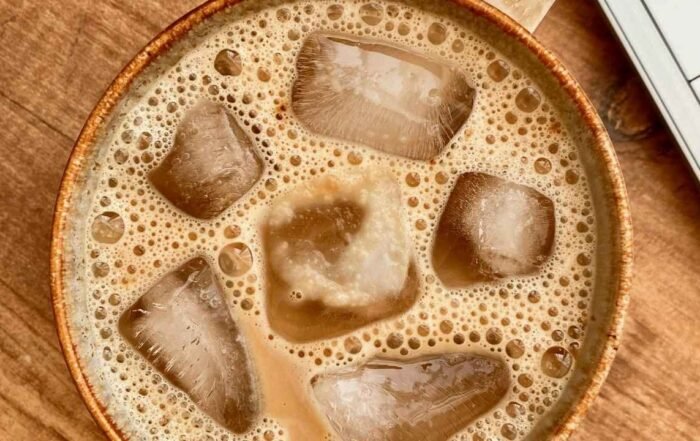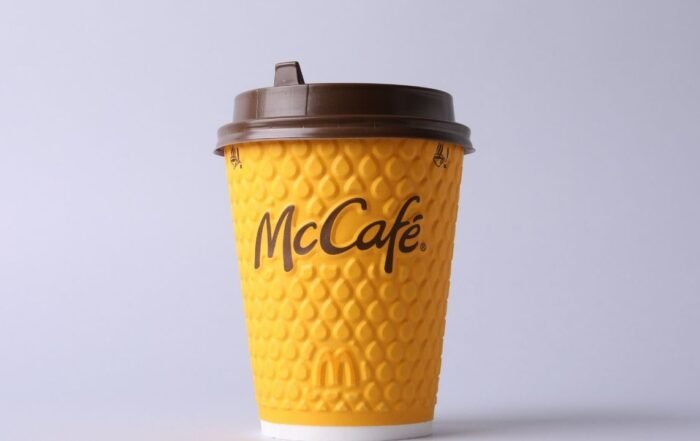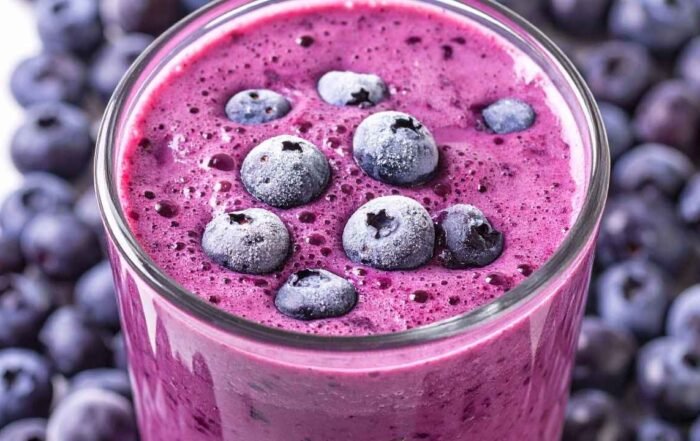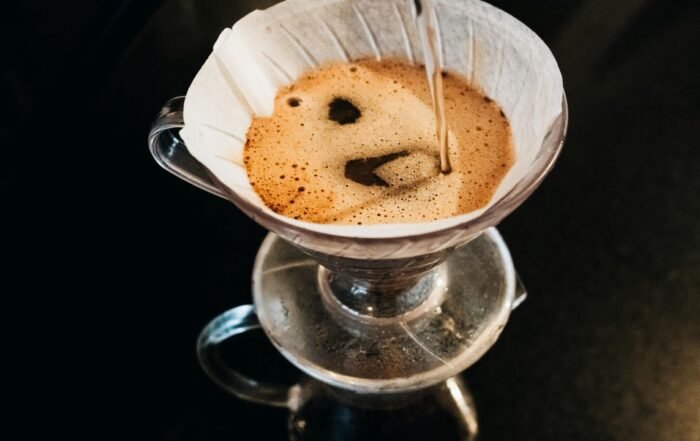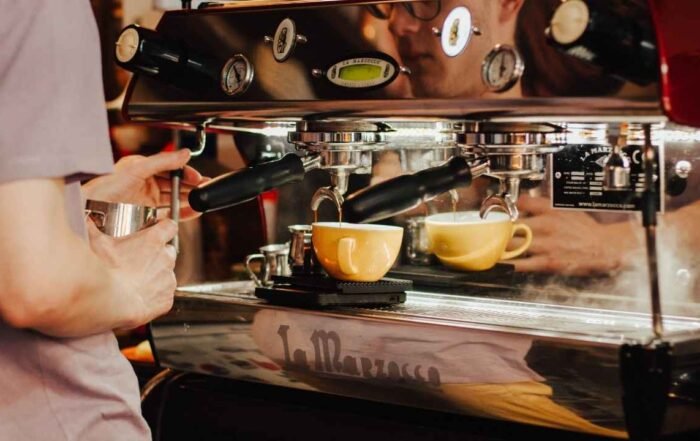In this Article
- How To Brew Drip Coffee Step-by-Step
- Finding the Right Drip Brew Coffee to Water Ratio
- Tips for a Perfect Drip Coffee Experience
- Exploring Drip Cold Brew | A Refreshing Twist
- Mastering the Art of Slow Drip Cold Brew
- Common Drip Coffee Brewing Mistakes to Avoid
- Final Thoughts | Making the Most of Your Drip Brew in 2025
- Frequently Asked Questions
- Leave A Comment Cancel reply
- Related Posts

Drip coffee is still the most widely used brewing method. Its simple, trustworthy, and delivers consistent outcomes without any barista certification. This brewing technique produces crisp, well balanced flavors that most people enjoy it, so whether you’re using an automatic drip machine or going manually with a pour-over setup you should definitely learn how to brew drip coffee.
The simplicity of drip brewing is its beauty; hot water once passes through coffee grounds, extracting just the correct amount of flavor without the intricacy of other techniques. Even coffee connoisseurs concede that any day a well-made drip coffee trumps a badly prepared espresso.
The Popularity of Drip Brewing at Home
Because it is forgiving and simple to scale up for several cups, home brewers adore drip coffee. Using the same simple technique, you may prepare a single portion or enough for the entire family.
What Sets Drip Coffee Apart From Other Brewing Methods
Drip brewing draws water through coffee grounds using gravity, hence separating the solids from the liquid. This results in a lighter, more crisp flavor than immersion techniques like French press.
How To Brew Drip Coffee Step-by-Step
Learning how to brew drip coffee properly starts with understanding the basics. Follow the steps below.
Equipment needed:
- Quality coffee beans
- Grinder
- Filtered water
- Automatic drip maker or manual pour-over equipment
Steps:
- Heat your water to around 200°F – just off boiling
- While water heats, grind your coffee beans to a medium consistency, similar to coarse sand
- If using an automatic machine, add coffee to the filter basket and water to the reservoir, then press start
- For manual brewing, place a filter in your dripper, rinse it with hot water, then add ground coffee
- Start your timer and slowly pour hot water over the grounds in circular motions, allowing it to drip through completely
- The entire process should take 4-6 minutes for optimal extraction
- Keep your brewing setup clean and use fresh beans for the best results

Finding the Right Drip Brew Coffee to Water Ratio
Getting the drip brew coffee to water ratio right makes the difference between amazing coffee and disappointing swill. One gram of coffee for fifteen grams of water is the conventional beginning point of 1:15. Actually, that’s around 2 tablespoons of ground coffee per 6 ounces of water.
But it’s your starting point for experimenting; it is not fixed. While others enjoy their coffee lighter and go for 1:17, some others favor stronger coffee and use a 1:12 ratio. Finding what tastes good to you then consistently sticking with it is key.
Recall that various coffee beans extract differently; hence, you may have to change your ratio when testing new types. Start with the golden ratio, taste your outcomes, and tweak from there until you achieve your ideal.
Golden Ratio Explained for Beginners
The 1: 15 ratio is utilizing 1 gram of coffee for every 15 grams of water. This works out to around 2 tablespoons of ground coffee for every 6 ounces of water. For most tastes, this ratio results in balanced extraction without being too weak or dominating.
Tips for a Perfect Drip Coffee Experience
Your coffee is more influenced by water quality than many people understand. Wherever feasible, especially if your tap water has strong mineral flavors or a chlorine taste, utilize filtered water. The filter you pick also matters; metal filters let more oils through for a fuller body while paper filters capture oils and tiny particles for cleaner cups.
Even extraction depends on constant temperature. Let boiling water sit for half a minute before pouring if brewing by hand. Make sure your automatic device heats water to the appropriate temperature spectrum. To stop old coffee oils from going bad and impacting taste, clean your gear often.
Also water temperature and filter quality impact your coffee. The recommended temperature of water should be between 195-205°F. For a mouthful taste and flavor you must use fresh coffee beans and correct grind size. The ideal grind size is medium for most drip coffee brewing methods.
Exploring Drip Cold Brew | A Refreshing Twist
Drip cold brew provides a unique approach to cold coffee that yields exceedingly smooth results. Unlike conventional cold brew, in which grounds soak in water for hours, drip cold brew employs a slow, regulated dripping method requiring 3–12 hours depending on your gear. Less sour and bitter than hot-brewed coffee cooled down, this technique generates a concentrated coffee.

The sluggish extraction method usually brings out chocolate and nutty undertones by highlighting other flavor notes in your beans and lowering strong acids. Specialized gear like a cold drip tower or a basic DIY setup with a container with small holes for regulated dripping will be necessary. You get a coffee that is silky and strong ready to be diluted with water or milk or drunk straight.
What Is Drip Cold Brew and How It Differs From Regular Cold Brew
Rather than immersion, cold brew relies on time and gravity. Over several hours, cold water gradually trickles through coffee grounds to produce a highly concentrated extract. This contrasts with typical cold brew, where coffee grounds remain in water for 12 to 24 hours before filtering.
Mastering the Art of Slow Drip Cold Brew
Slow drip cold brew demands patience, but it pays you very smooth coffee. Compared to heated brewing, the longer extraction time lets water extract different chemicals from the coffee grinds. Lower acidity and less bitterness follow from this, even while maintaining caffeine level and creating rich flavors.
Setting up a slow drip cold brew requires regulation of the drip speed; usually one drop every 1–2 seconds is sufficient. Too fast and you’ll under-extract; too slow and the process becomes useless. Your coffee-to-water ratio and drip velocity define the concentration you attain.
Most people realize that a 12-hour drip gives coffee concentration that must be diluted before consumption. Find your ideal taste profile by experimenting with various beans and drip rates.
How Slow Drip Enhances Flavor Extraction
The longer contact time enables delicate coffee compound extraction devoid of heat-induced bitterness. This approach emphasizes natural sweetness and lowers harsh acids, hence producing a smoother, more balanced flavor profile than conventional brewing techniques.
Common Drip Coffee Brewing Mistakes to Avoid
People’s worst error is using the incorrect ratio of coffee to water, therefore producing either weak, thin coffee or sour, over-extracted brews. Grinding coffee too far ahead is another often made mistake as it lets aromas to flee and oils to sour.
Many home brewers use water that is either too hot or too cold, therefore upsetting the extraction mechanism. Another offender is dirty equipment, aged coffee oils go sour and pollute new brews with unpleasant tastes. Finally, erratic timing confuses extraction, especially with manual pour-over techniques when too quick or too slow pouring impacts the ultimate flavor.

Final Thoughts | Making the Most of Your Drip Brew in 2025
The most approachable and reliable approach to make excellent coffee at home remains drip coffee. Whether you want the control of manual brewing or the ease of an automatic machine, good beans, accurate ratios, correct temperature, and clean tools remain the fundamentals.
Start with simple methods and progressively improve your style based on your tastes; don’t let all the factors overwhelm you. Simplicity and dependability make drip brewing ideal for both novice and expert coffee enthusiasts.
Frequently Asked Questions
What’s the best coffee-to-water ratio for drip coffee?
Start with a 1:15 ratio (1 gram coffee to 15 grams water) or about 2 tablespoons of ground coffee per 6 ounces of water. Adjust stronger or weaker based on your taste preferences.
How long should drip coffee take to brew?
Manual pour-over should take 4-6 minutes total, while automatic drip machines typically complete brewing in 5-8 minutes. Slower extraction generally produces better flavor than rushing the process.
Can I make cold drip coffee without special equipment?
Yes, you can create a DIY cold drip setup using a container with small holes or a coffee filter with tiny punctures. The key is controlling the drip rate to about one drop per second.




